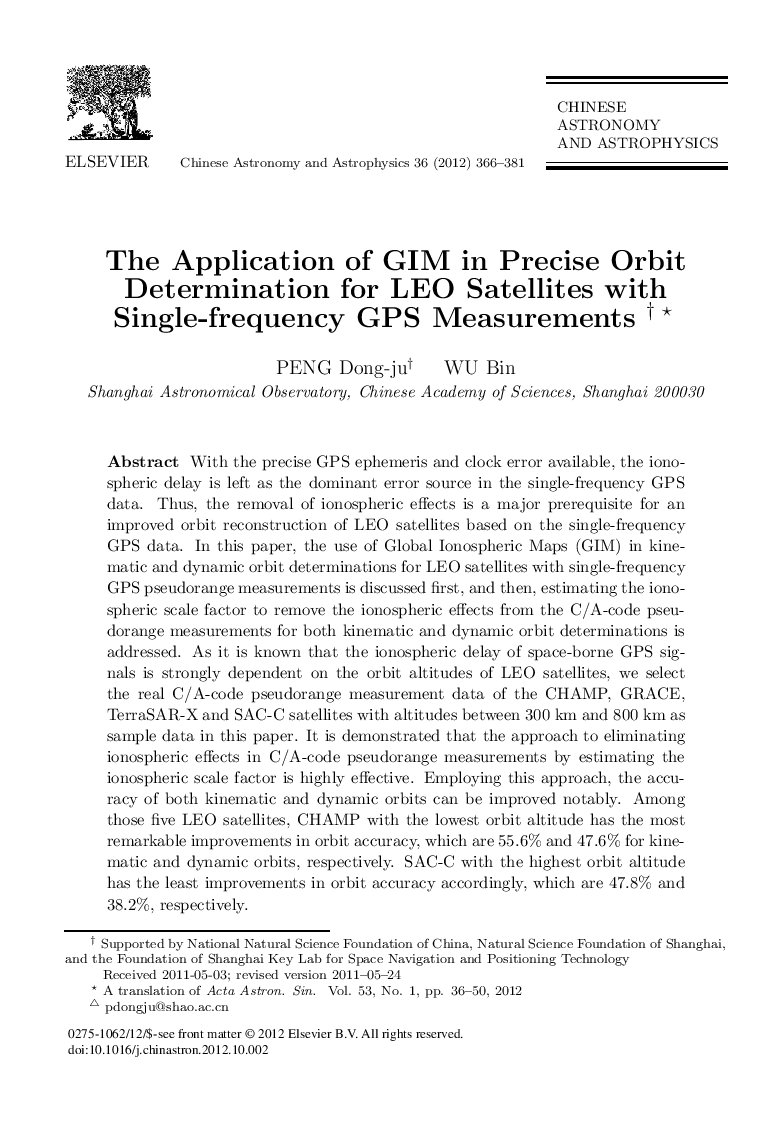| Article ID | Journal | Published Year | Pages | File Type |
|---|---|---|---|---|
| 1771887 | Chinese Astronomy and Astrophysics | 2012 | 16 Pages |
Abstract
With the precise GPS ephemeris and clock error available, the iono- spheric delay is left as the dominant error source in the single-frequency GPS data. Thus, the removal of ionospheric effects is a ma jor prerequisite for an improved orbit reconstruction of LEO satellites based on the single-frequency GPS data. In this paper, the use of Global Ionospheric Maps (GIM) in kine- matic and dynamic orbit determinations for LEO satellites with single-frequency GPS pseudorange measurements is discussed first, and then, estimating the iono- spheric scale factor to remove the ionospheric effects from the C/A-code pseu- dorange measurements for both kinematic and dynamic orbit determinations is addressed. As it is known that the ionospheric delay of space-borne GPS sig- nals is strongly dependent on the orbit altitudes of LEO satellites, we select the real C/A-code pseudorange measurement data of the CHAMP, GRACE, TerraSAR-X and SAC-C satellites with altitudes between 300Â km and 800Â km as sample data in this paper. It is demonstrated that the approach to eliminating ionospheric effects in C/A-code pseudorange measurements by estimating the ionospheric scale factor is highly effective. Employing this approach, the accu- racy of both kinematic and dynamic orbits can be improved notably. Among those five LEO satellites, CHAMP with the lowest orbit altitude has the most remarkable improvements in orbit accuracy, which are 55.6% and 47.6% for kine- matic and dynamic orbits, respectively. SAC-C with the highest orbit altitude has the least improvements in orbit accuracy accordingly, which are 47.8% and 38.2%, respectively.
Related Topics
Physical Sciences and Engineering
Physics and Astronomy
Astronomy and Astrophysics
Authors
Peng Dong-ju, Wu Bin,
